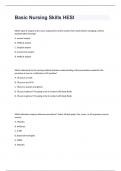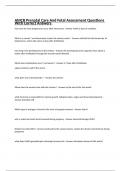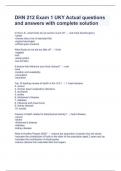Class notes
Understanding Gas Exchange and Circulatory Systems: Lecture 21 Overview
- Course
- BSCI 207
- Institution
- University Of Maryland - College Park
This document encapsulates the core concepts discussed in Lecture 21, focusing on organisms' gas exchange and circulatory systems. It elaborates on Fick’s Law and the Hagen-Poiseuille Equation, explaining how physical constraints influence the evolution of gas exchange organs and circulatory syst...
[Show more]












